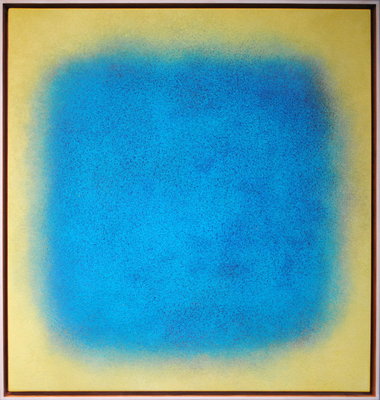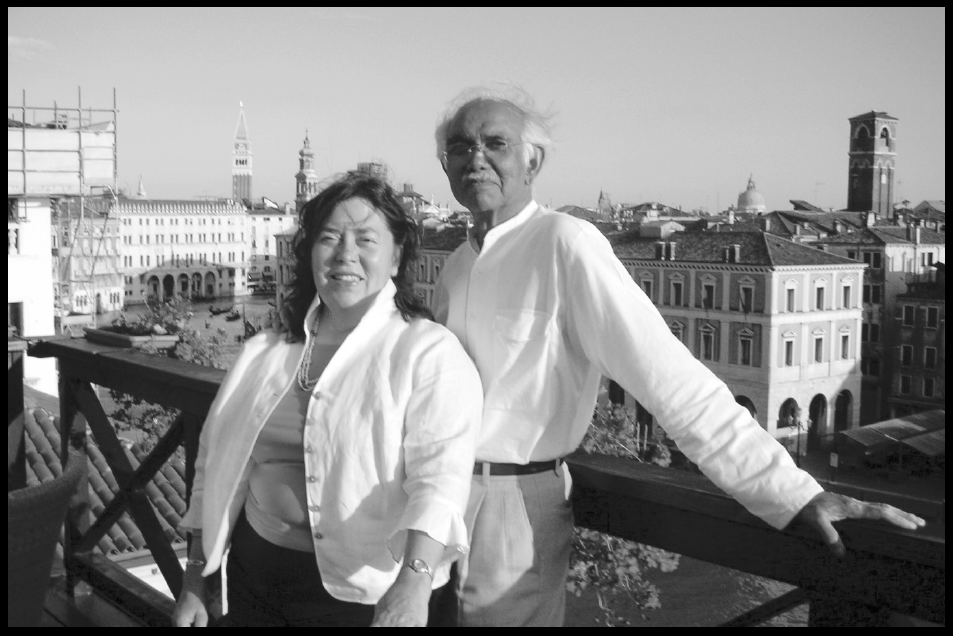CLEVELAND, Ohio -- If you're mesmerized by photographs of far-off galaxies and nebulae glowing in the infinite vastness of space, Contessa Gallery in Lyndhurst has a show for you.
Through Sunday, March 18, the gallery is showing an ample survey of paintings by Natvar Bhavsar, a native of the state of Gujarat, India, who established himself in the 1960s in New York and joined the Color Field movement.
Bhavsar doesn't paint astronomical phenomena or anything else literally recognizable, but his paintings evoke notions of sublime vastness and show how artistic materials, properly handled, can celebrate their physicality while also imparting elevated moods, if not a sense of the spiritual.
True to its name, proponents of Color Field painting, including Morris Louis, Jules Olitski and Helen Frankenthaler, created large abstractions that explored the physical properties of paint and the emotional and spiritual qualities of color.
Five decades later, that's still what Bhavsar is doing, and he's doing it very well.
The Contessa exhibition explores a suite of paintings in which Bhavsar sifts clouds of acrylic paint on canvas through screens, achieving soft blooms of color that always seem on the verge of coalescing into something while remaining nebulous and tantalizingly out of reach.
The tension between dissolution and coalescence is part of the allure. But Bhavsar's paintings also simply revel in the way color interacts with the eye while also conveying powerful moods and emotions.
In a large canvas called "Sravanaa," from 2008, Bhavsar lays down a cool, luminous cloud of turquoise and cobalt, which emerge from a field of superheated rust-red. In "Mugdhaa II" (2009), squiggling arabesques in various colors create a carpet of free-flowing, gestural shapes on a field of electric blue.
Bhavsar's paint often looks dry, as if the surfaces of his canvases were crusted with colored sand. At other times, he opts for surfaces with a high shine, evoking baked enamel. At still other times, his surfaces are soft and pebbly, like leather.
Overall, Bhavsar's work occupies a marvelous niche in modern and contemporary art in which East and West meet. It's often noted that Abstract Expressionist painters such as Franz Kline or Mark Tobey were influenced by Chinese and Japanese calligraphy. But it's more unusual to see a bridge between American art of the 1950s and '60s, and that of India.
Bhavsar's paintings make the connection seem thoroughly logical. They also bring to mind the Indian festival of Holi, in which people playfully splash each other with colored powder. The festival, observed by Bhavsar as a child, has had a major influence on his work.
Given the apparent simplicity of his paintings, it's easy to feel that you've seen all there is to see in a Bhavsar with the first glance. That's a mistaken assumption.
His work requires long, slow looking. You need to let the paintings work first on your retina and then, ultimately, on your imagination.
Read the entire review by Steven Litt (of the Plain Dealer) by clicking here.















